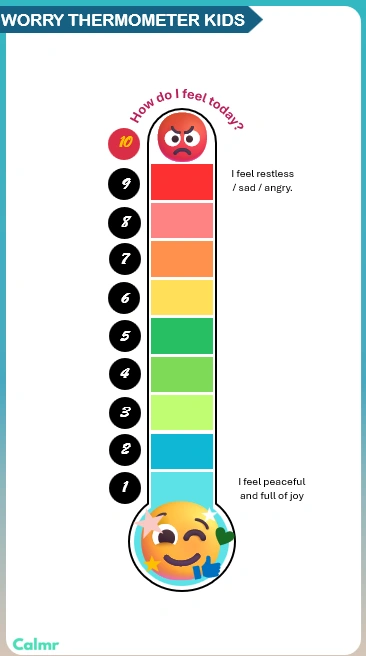Welcome Parents
I am so glad you're here.
As parents, it’s natural to feel concerned when your child is anxious. While occasional anxiety is a normal part of life, for some children their fears and worries can become overwhelming and interfere with daily life. They require more of your time and attention; their emotional outbursts or meltdowns are frequent, and it can impact the entire family unit.
Recognising the signs, understanding anxiety and how to support your child can make a big difference in them navigating and mastering their fears. With the right tools and support, your child can grow in confidence and learn to become a ‘worry warrior'.
We all get anxious at times; it's a normal emotion. We often refer to it as fear, nervousness, stress or worry.
It is a helpful response that alerts us to danger, keep us safe & drives us to perform better. Giving a speech or playing a grand final can make us nervous, but the stress can help us to be sharp & successful - to play our best.
The only difference for your child is the degree of anxiety experienced, the frequency and the intensity. They are scared. They are getting “false alarms” that produce very real physical symptoms. It is important that they learn how to manage and control their anxiety, so it doesn’t limit their enjoyment of life.
Anxiety is a big problem worldwide and is generally not something your child will “just grow out of”. Anxiety grows and can quickly spread into other aspects of life. Eg: If a child gets anxious in maths, it can spread to the classroom in general, then the playground and over time, getting them to school may become a daily quest!
Can I encourage you to reach out and find your child or teenager some help. Don't delay. They really need us adults to help them, to rally for them and believe in them.
3 things impacting your child’s anxiety
1. Children can attach themselves to their diagnosis. It becomes their identity – who they are, instead of something external that impacts their life. It isn’t who your child is. Helping them to externalise their diagnosis (as a dragon, shadow, lion, stormcloud) helps them maintain their sense of self.
2. Children and Teenagers (even adults if we are honest}, often believe that everything they think IS TRUE. When they catastrophise mum’s late to “OMG mums been in a car crash” they accept it as truth, without questioning it or challenging how realistic that is. By simply saying “no, this is my anxiety (my dragon) speaking. This isn’t true and mum will be home soon” they learn that their brain although trying to protect them, gets it wrong….alot. Help your child figure out which thoughts are realistic and which ones aren’t.
3. By ‘owning’ a diagnosis, our children and teenagers put themselves down, highlighting to themselves everything that is wrong with them and everything that is right with friends & confident peers. We need to call it out when we see our kids saying this & speak life and encouragement and potential into them. This examples to them how to show themselves love and compassion and give themselves an emotional ‘hug’ when they need it. “Good job, Nate. I was strong today”.
The stories our children tell themselves need to be challenged and changed or they will hate themselves because of the lies they think are true.

Measuring Anxiety Levels
It is hard for us as parents to gauge just how anxious our child is feeling. Using a "Worry Scale" (kids) or a "Feeling Scale" (teens) can be helpful for everyone.
A Worry Thermometer or Feeling Scale is a simple tool, designed like a regular thermometer, that helps children and teenagers rate the intensity of their anxiety. It gives a parent or teacher a quick snap shot of how the child or teenager is coping.
For teenagers it's also used to check if de-escalation strategies are working. eg: 7/10 worried and start practicing my anxiety strategies. After 2 minutes my symptoms are 5/10 so I keep going. After 5 minutes I am 3/10 and can transition into praise and reassurance of self.
Plenty of examples can be found online to use.